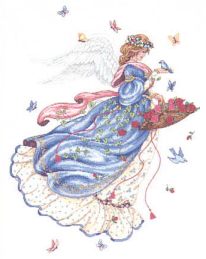How Did That Tradition Get Started?
|
The earliest marriages were by capture. A
prospective groom would kidnap the woman of his
choosing, taking her away from her tribe with the
help of a
warrior friend, his best man. The best
man would also help him fight off other men who
might want to "marry" this
woman, and also help him hide her from her family
and tribesmen. The groom would whisk away his
bride, usually by the light of the moon -- hence,
the honeymoon -- and go into
hiding. By the time the bride's family were
"allowed" to find them, she would be
impregnated and the marriage would be honored.
When necessary, the groom fought off other warriors who also wanted his bride, holding onto her with his left hand, while fighting them off with his sword in his right hand. This is why the bride stands on the left, and the groom on the right.
Although the "marriage by capture" method was common, marriage by purchase was the preferred mode. A prospective bride might be bartered for land, social status, or political alliances, or exchanged for cash. The Anglo-Saxon word "wedd" meant that the groom would vow to marry the woman, but it also meant the money or barter that the groom paid the bride's father. A wedding, then, literally meant the purchase of a bride for breeding purposes. The word wedding comes from a root word meaning to gamble or wager.
Arranged marriages occurred between families of fairly equal social status, often for political alliance. The parents decided upon the match. Rarely did the engaged couple ever lay eyes on each other until the ceremony. The bride's veil covered her face not for reasons of propriety, but rather lest her countenance proscribe the ceremony. The bride's father gave the bride away to the groom who only after the ceremony was permitted to lift the veil and see his bride for the first time.
The expression "tie the knot" comes from Roman times when the bride wore a girdle that was tied in knots which the groom had the fun of untying.
Diamond engagement rings were given by medieval Italians, because of their belief that the diamond was created from the flames of love.
Ancient Spartan soldiers were the first to hold stag parties. The groom would feast with his male friends on the night before the wedding. There he would say goodbye to the carefree days of bachelorhood and swear continued allegiance to his comrades.
Bridal showers were also meant to strengthen the friendships between the bride and her friends, give her moral support, and help her prepare for her marriage. The idea to give gifts is fairly new, dating from the 1890's. At one shower, the bride's friend placed small gifts inside a japanese parasol, and then opened it over the bride's head so all of the presents would "shower" over her. When word of this hit the fashion pages, people were so charmed, they decided to do the same at their showers. The bridal party has many origins, one of which comes from the Anglo Saxon days. When the groom was about to capture his bride, he needed the help of his friends, the "bridesmen" or "brideknights". They would make sure the bride got to the church and to the groom's house afterwards. The bride also had women to help her, the "bridesmaids" or "brideswomen".
The white wedding dress was made popular by Anne of Brittany in 1499. Before that, a woman just wore her best dress. In biblical days, the color blue represented purity, and the bride and groom would wear a blue band around the bottom of their wedding attire, hence something blue.
Back to Wedding Central |
